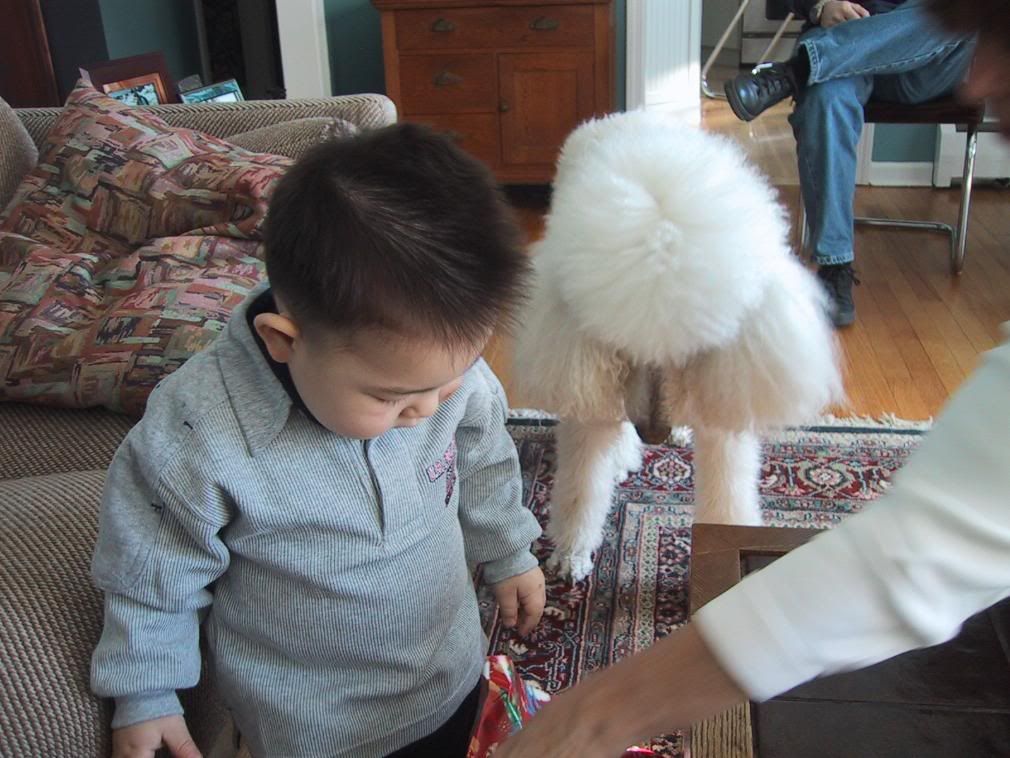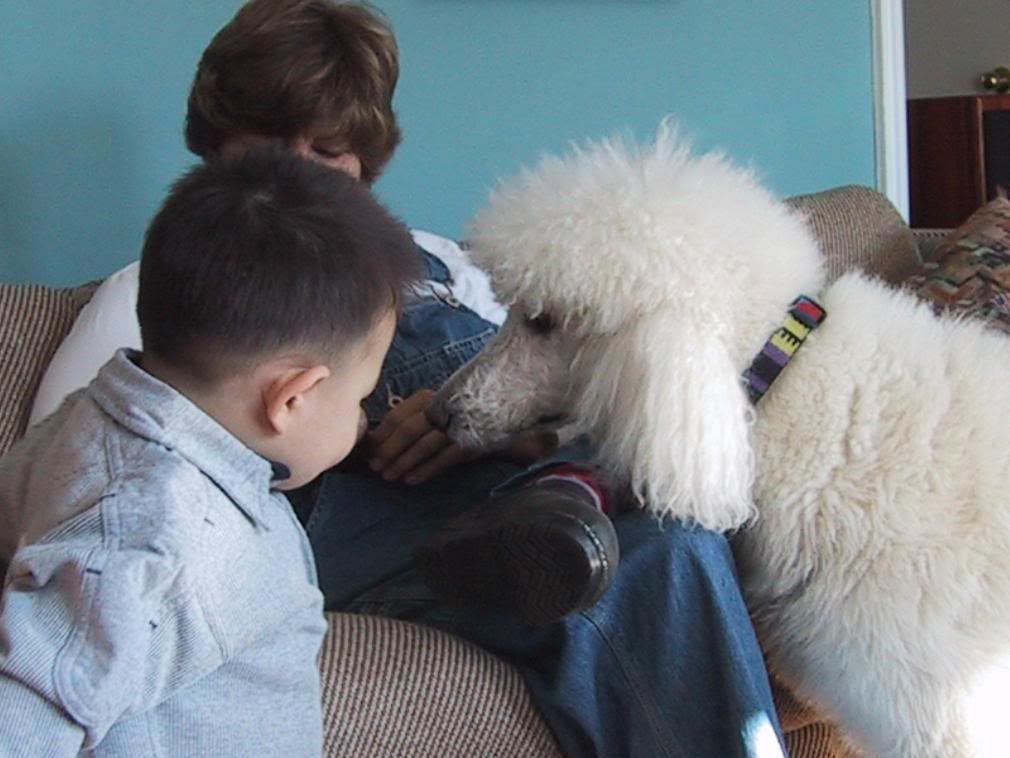Cool! I found that I don’t need a show dog, just one that has a good lineage and is tested,etc.
Now some research.
Thanks
It is tough. Too many breeders are only looking at their next title. They talk testing and health. Ask about allergies, bloat, cancer, etc. Also, refuse to take a puppy over 8 weeks old. Cite? 404 Page Not Found - APDT International
I don’t even want to say what image this thread title conjured up for me.
This is pretty good.
I agree with labdude…just because someone shows and has AKC (or UKC or th Canadian KC, not to be confused with the junk registry with the same initials) registered dogs, doesn’t mean they’re particularly ethical in their breeding practices.
I’ve never bred a litter of anything nor shown in conformation, but I have bought a couple of dogs from good breeders and know several who do show and breed occasionally. Most litters will have both show- and pet-quality pups, someone good at evaluating the puppies can spot subtle “flaws” that later will preclude the dog from the ring or as a breeding prospect. Also a good breeder will spend time talking to you and will pick the pup for you with the best temparament for your situation.
Go here and look up dog shows…they’re fun to go to as a spectator! While the people showing might be preoccupied with their dogs, there’s often lots of down-time during a show and you can chat with people.
Another good place to start-join the national breed club, even before you buy. You will most likely get a monthly (or bi-monthly) newsletter, and there will be ads for litters.
I really hate it when the show dog bashing starts. Yes, there are some unethical breeders in the show world, but the vast majority love their dogs, their breed, and they carefully plan their litters, do health testing, etc… they breed for the betterment of the breed. They want their puppies to go into loving, forever homes, and a good, responsible breeder will take that puppy/dog back at any time in its life if the new owners’ circumstances change.
Find yourself a good breeder, then stay in touch with them. I bought my first Gordon Setter from such a breeder in 1982… we still get together to train, groom and go to shows & field events.
This is certainly true, but the one potential issue with the above is that definitions of “betterment of the breed” vary. For many serious show breeders the most important item on the list is often appearance. I’m not saying it is the only item on that list, just that is often #1 and that can have unfortunate consequences particularly in breeds known for certain outre physical features like brachycephaly or wrinkled skin. But really any breed.
Though I think good breeders are more cognizant of downsides than maybe they once were due to a better understanding of genetics, temperament and overall health has been compromised before by people with the very best of intentions.
Show breeders lay them selves wide open due to their unremitting attacks on anybody else sellig puppies. People that live in glass houses shouldn’t throw rocks.
Absolutely.
Which is why IMO it’s a good idea to look for people who work their dogs, if it’s a working/herding/hunting/field type breed. Either for real, or in trials. Who breed for function and proper temperament as much as form.
There’s already a split in the show world; with the appearance and temperament of some breeds being tweaked and softened for the show ring. Border collies and cattle dogs that are pretty as all get-out bred specifically for show, but have none of the edge and working ability that the original purpose-bred herders have. Some terriers bred for tiny size and flowing coat instead of a well-rounded terrier. Couch-potato show Labradors versus field-bred Labs. Over-angulated, hock-kneed Am-bred GSDs. Big pudgy fat-head dysplastic Rottweilers with no drive.
It’s true that some horrible genetic flaws have been bred into some breeds because breeders were over-emphasizing features that judges look for in the ring to the exclusion of other features. I have some AKC standard books from the 1930s and 40s; some breeds looked very different 80 years ago and were generally fitter and more capable. The brachycephalic breeds most notably.
However there are indeed a lot of really responsible breeders who aim for a “well-rounded” dog, have litters only very occasionally and are extremely particular about where their puppies go.
That’s exactly what I want. I prefer she not be bred for the beauty contest (sorry, I don’t know what else to call it) type. Showing is alright, as long as the dog is happy, it’s just that I’m not interested. Healthy and of good temperment is what I’m looking for. She’ll be spayed and had anything neccessary done as soon as advisable.
Just since I keep thinking of it, here are some dog pics:
Dog in snow
Dog again
Blurry, but shows his face a bit better. Sometimes you can’t tell his features from his hair. Note the lack of goofy haircut.
Manly dog laughs at winter.
Beautiful dog. I took the liberty of looking at the other pics.
That’s what I want.
Thanks.
![]()
I know nothing about picking a breeder, but for what it’s worth here’s where he’s from.
Cool!
Thanks
That appears to be an excellent breeder!
I agree. I’m in the US, but I’d love to have a good excuse to visit Canadia and meet a bunch of Canadans. ![]() Not sure what international law and/or the breeder have to say about such an adoption, but it would be easy enough to find out.
Not sure what international law and/or the breeder have to say about such an adoption, but it would be easy enough to find out.
Real men respect their poodles. And let them watch TV if they want.

Warning: Poodles love football. And are lap dogs.

They’re great with children.




But even as a puppy, they’re disturbingly aware of the world.

Don’t worry about the froofy appearance. That’s just dressed up.

They’re rough and tumble as any other critter.

Though they do tend to hog the armrest.

More seriously, if you want a breeder in New York, I can give introductions.
A thin dog with curly pompoms stuck to some parts of its anatomy doesn’t look like a dog. A thin dog with curly, pink-dyed pompoms is an offense unto dogginess. That small but not tiny, long and curly-haired black poodle who was waiting patiently for its owner at the supermarket’s door last Friday did very much look like a smart, well-behaved, properly-trained dog.
We lost the previous dog to bloat, sadly, the current one is stapled.
Let’s see. Poodles are hefty dogs. They’re smart enough to figure out how to open lever latched doors. And sliding doors. And knobbed doors (some of them.) Poodles have figured out how to turn on the TV with the remote.
They can get most food within reaching distance from the counter. Consider your average poodle to be able to reach anything within five and a half feet from their rear legs. Poodles tend to be especially fond of one specific food. In the past, we have had a bakery hound, an apple hound, and a carrot hound.
Poodles love having a crate to be in. And toy boxes to keep their toys in. They will put their toys in the box with minor training, and take them out without training.
They learn tricks from other dogs. Not always the tricks you intended them to learn.
They’re fairly athletic, and like running quite a bit. Fetching, however, is an individual taste. The current one is frisbee-mad, the previous one didn’t care at all.
They’re also fantastic with children. Seriously. I remember being very impressed one day when an older poodle of ours, finally grew fed up with a 3 year old beating on her, whipped her head around, and firmly placed her mouth around his hand. It got the meaning across. Not a mark on him.
Some poodles tend to be very paw-centric, too. The opening the door trick, opening food boxes, removing wrappings, can be multiple paw-and-mouth manipulations. They’re not raccoons, but they’re handy.
Attackdog is very well behaved, if you’re clear on what the rules are. He will not go into the kitchen under virtually any circumstances, because we taught him not to. He will not eat off the dining room table. However, any other table it felt to be fair game, and he’s very fast and very focused.
Five and a half feet may be an undercall. I’ve taken him for a walk looked over at him and discovered his body floating along level with my eyes (I’m 5’8"). He had just jumped to head-height for the hell of it. It was like having a balloon dog.
Oh, sure, jumping’s another story. I mean ‘on the counter, across a right angle bend, inside the breadbox’ where jumping wouldn’t help much.
And yes, they do respond well to teaching them rules. They may, however, make up their own rules. Or inferences.